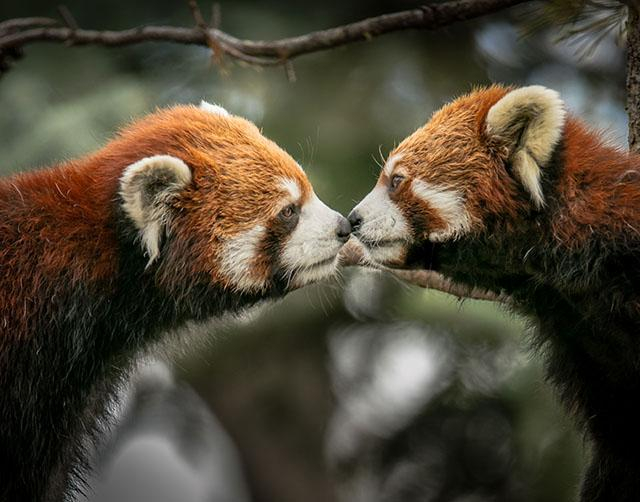In the vast animal kingdom, communication plays a vital role in survival, reproduction, and social interactions. From intricate vocalizations to subtle body language and even chemical signals, animals have developed diverse ways to convey information and interact with one another. Some examples that highlight the richness and complexity of their communication systems are:
1: Vocalizations Animals employ an array of vocalizations to communicate with their counterparts. Birds' melodic songs serve as territorial displays and mating calls, while primates use vocalizations to express emotions and establish social hierarchies. Whales and dolphins communicate through a series of clicks, whistles, and songs, often traveling long distances to convey messages across vast ocean expanses. Examples of animal vocalizations include the melodic songs of nightingales, the haunting calls of wolves, and the rhythmic clicks of dolphins.
2: Body Language Body language is another crucial aspect of animal communication. Insects, such as bees and ants, utilize intricate movements and dances to convey information about food sources and navigational cues to their colony members. Canines employ a range of postures, tail positions, and facial expressions to express emotions and social status within their packs. Additionally, animals like peacocks display their vibrant plumage in courtship rituals to attract potential mates. Examples of animal body language include the wagging tail of a happy dog, the aggressive posturing of a defensive cat, and the elaborate courtship dances of birds of paradise.
3: Chemical Signals Chemical signals, often known as pheromones, play a vital role in animal communication. These chemical compounds transmit messages between individuals of the same species and can influence behavior, mating choices, and territorial marking. Ants use pheromones to mark trails and coordinate foraging activities, while female moths emit specific scents to attract males for mating. Even humans emit chemical signals called pheromones that can unconsciously influence social interactions. Examples of chemical signals in animals include the scent marking of a tiger to establish territory, the trail pheromones of ants, and the sex pheromones emitted by female insects.
The world of animal communication is a captivating realm, filled with an astonishing diversity of vocalizations, body language, and chemical signals. Through these modes of communication, animals convey information, express emotions, and establish social connections essential for their survival and well-being. By understanding the complexities of animal communication, one can gain insights into the natural world and foster a greater sense of empathy and connection with the diverse species that share our planet.
